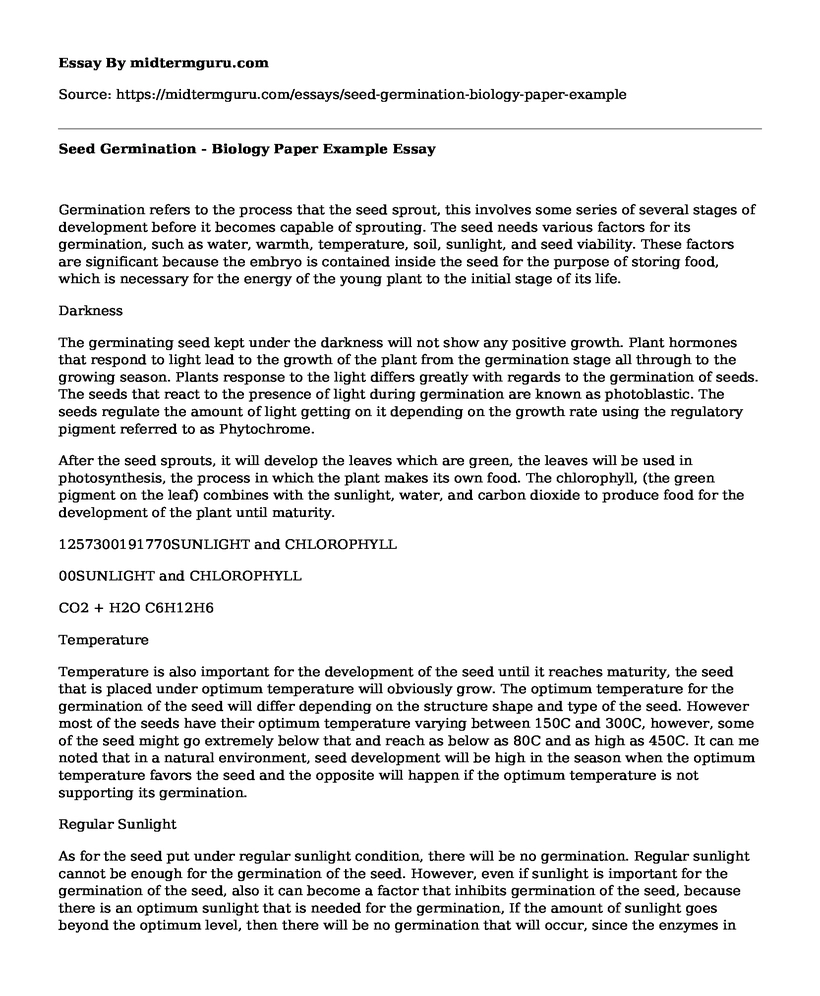Germination refers to the process that the seed sprout, this involves some series of several stages of development before it becomes capable of sprouting. The seed needs various factors for its germination, such as water, warmth, temperature, soil, sunlight, and seed viability. These factors are significant because the embryo is contained inside the seed for the purpose of storing food, which is necessary for the energy of the young plant to the initial stage of its life.
Darkness
The germinating seed kept under the darkness will not show any positive growth. Plant hormones that respond to light lead to the growth of the plant from the germination stage all through to the growing season. Plants response to the light differs greatly with regards to the germination of seeds. The seeds that react to the presence of light during germination are known as photoblastic. The seeds regulate the amount of light getting on it depending on the growth rate using the regulatory pigment referred to as Phytochrome.
After the seed sprouts, it will develop the leaves which are green, the leaves will be used in photosynthesis, the process in which the plant makes its own food. The chlorophyll, (the green pigment on the leaf) combines with the sunlight, water, and carbon dioxide to produce food for the development of the plant until maturity.
1257300191770SUNLIGHT and CHLOROPHYLL
00SUNLIGHT and CHLOROPHYLL
CO2 + H2O C6H12H6
Temperature
Temperature is also important for the development of the seed until it reaches maturity, the seed that is placed under optimum temperature will obviously grow. The optimum temperature for the germination of the seed will differ depending on the structure shape and type of the seed. However most of the seeds have their optimum temperature varying between 150C and 300C, however, some of the seed might go extremely below that and reach as below as 80C and as high as 450C. It can me noted that in a natural environment, seed development will be high in the season when the optimum temperature favors the seed and the opposite will happen if the optimum temperature is not supporting its germination.
Regular Sunlight
As for the seed put under regular sunlight condition, there will be no germination. Regular sunlight cannot be enough for the germination of the seed. However, even if sunlight is important for the germination of the seed, also it can become a factor that inhibits germination of the seed, because there is an optimum sunlight that is needed for the germination, If the amount of sunlight goes beyond the optimum level, then there will be no germination that will occur, since the enzymes in the seeds will be destroyed and hence no food will be activated in the cotyledons.
Conclusion
All the factors that support germination need to be available for an effective germination to take place. The experiments show that, because sunlight is important for the germination of the seeds due to the activation of enzymes, also it needs to be at an optimum level to avoid damaging. Also, in the dark environment, no germination will take place because light is necessary for photosynthesis to take place in the initial stage of its growth. Lastly, the optimum temperature is necessary for the germination for the activation of the enzyme and for the process of photosynthesis.
Cite this page
Seed Germination - Biology Paper Example. (2021, Jul 02). Retrieved from https://midtermguru.com/essays/seed-germination-biology-paper-example
If you are the original author of this essay and no longer wish to have it published on the midtermguru.com website, please click below to request its removal:
- Types of Biological Agents
- Essay on Reproductive Techniques and Technologies: Cohen and Mcmahan
- Reflection of the Patient During Practicum Experience: Gastroesophageal Reflux Disease
- Essay on Human Evolution and Development of the Phone
- Human Adaptation to Climate: Annotated Bibliography
- Biotech: Unlocking Biological Processes for Industrial Use - Essay Sample
- Essay Sample on Evolution of Mice







